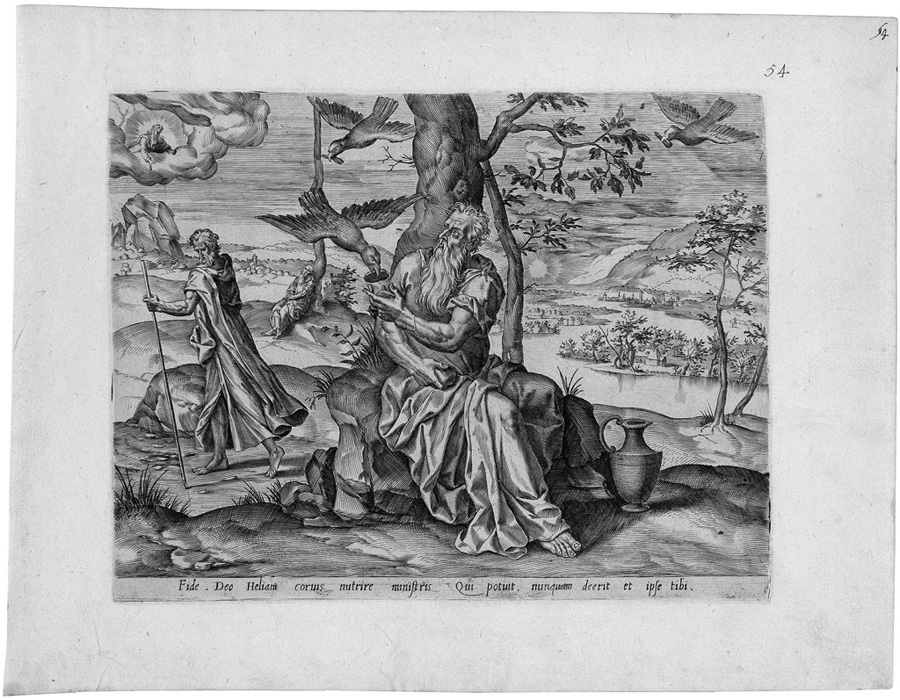Loading the page ...
Pieter Jalhea Furnius
(called Dufour, c. 1545–1626, Liège)
The Story of the Prophet Elijah. Four engravings, each measuring c. 21.1 x 27.4 cm. Undescribed.
Our knowledge of the life and work of the Liège painter and engraver Pieter Furnius is still very rudimentary, and the present series with scenes from the Old Testament is not described in the critical literature. Hollstein’s catalogue of engravings by Furnius, which is very scanty and incomplete, fails to include the Elijah cycle in its inventory. The prints we know to have been done by Furnius reveal him to be a significant and highly individual representative of Flemish Mannerism. Like many artists of his generation, Furnius studied under the influential painter Lambert Lombard in Liège. He spent the years between 1563 and 1571 in Antwerp working as a reproductive engraver for such well-known publishers as Christopher Plantin and Hieronymus Cock, while also producing a number of prints after his own inventions. His forceful, sometimes seemingly awkward engraving technique is characteristic of what is called the Antwerp style, the most important representatives of which included such engravers as Crispijn van den Broeck, Cornelis Cort and Philips Galle. The choice of learned and religious themes for Furnius’ prints indicates the edifying intent of his art. Engravings like the present Elijah cycle, which were generally kept in albums together with thematically related sets, were treasured by connoisseurs with a humanist or clerical background.
Our series depicts events in the life of the prophet Elijah. The first scene shows Elijah as an old man in a long prophet’s coat being fed by a crow against the backdrop of a wide river landscape. This topos of the Elijah iconography is combined with another scene in the background showing the tall, gaunt figure of the prophet preparing to embark on a journey. The other prints of the set illustrate the meeting with the widow of Zarephath and the raising of her son. Furnius’ formal language is stern, schematic and sometimes bleak. His engraving style is not intended to achieve beauty of line – its austerity is adapted to the seriousness of the theme. The figures appear static and massive, yet very expressive and imbued with great inner energy.
Superb tonal impressions with full margins. Minor ageing, old numeration in ink, otherwise in excellent, untreated condition.
